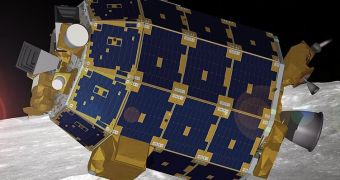Scientists from NASA and the Cambridge-based Massachusetts Institute of Technology (MIT) said recently that the Lunar Laser Communication Demonstration (LLCD) experiment aboard the American space agency's Lunar Atmosphere and Dust Environment Explorer (LADEE) spacecraft has exceeded all expectations its designers place in it.
This instrument is a testbed for an advanced optical communication system that relies on lasers. LLCD codes and transmits data as pulses of light, which are then picked up by a monitoring station on the ground. The device promises science data returns from future space missions at five times the rate possible with existing radio technologies.
After it was commissioned, LLCD was able to transmit data far more efficiently than researchers ever anticipated. Even more important is the fact that the coded messages arrived on Earth error-free, a feat that holds great promise for using similar communication devices on longer-duration missions.
Currently, it can take anywhere from minutes to hours for radio signals released by NASA probes across the solar system to be picked up by the Deep Space Network or similar installations. The new, laser-based technologies has the potential to link ground control to spacecraft nearly instantaneously.
The LADEE technology demonstrator achieved error-free transmission during optimal conditions, when the Moon was high in the sky and Earth's atmosphere was clear, but also when the natural satellite was low in the sky, and when the atmosphere was turbulent.
What surprised scientists the most was that the laser pulses were even able to make their way to the ground through thin clouds, something that was previously thought impossible. The bottom line is that LLCD-like communication devices could make data transmissions tens of times faster than today.
“It worked like gangbusters The system did what it needed to do. The concept is right, and the system is reliable. We think it’s ready for prime time,” said MIT Lincoln Lab expert Don Boroson, who was the leader of the LLCD design team at the Institute.
“Suppose you wanted to make a Google maps image of Mars and not even as crisp as Google maps. It would take decades to send that much data back with radio systems we have now. If you had a laser communication system with a 50-times-higher data rate, it would take tens of weeks. Then you could send all the data for a Google map in one year,” he added.
The LADEE mission launched aboard an Orbital Sciences Corporation Minotaur V delivery system from the NASA Wallops Flight Facility, in Virginia, on September 7, 2013. It achieved orbital insertion around the Moon on October 6, 2013, IEEE Spectrum reports.

 14 DAY TRIAL //
14 DAY TRIAL //